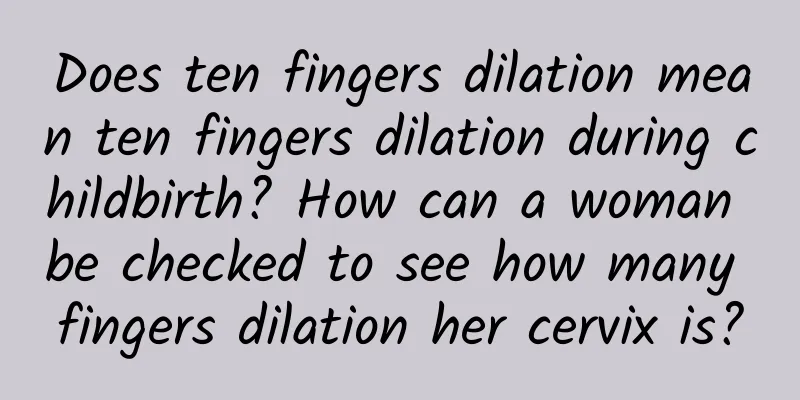Sharp and wet baby after normal delivery

|
Pregnant women with genital warts can also give birth smoothly, but their genital warts will usually worsen after giving birth. They must improve their own immunity during the confinement period and take some medications for treatment reasonably. They should try not to harm their baby's body and avoid affecting normal breastfeeding. They also need to find out the real cause of genital warts before treatment. The treatment of genital warts must adopt comprehensive treatment. 1. Treat the cause (foreskin is too long, vaginitis, balanitis, gonorrhea, etc.). 2. Improve the body's immunity. 3. Chemotherapy (1) 0.5% podophyllotoxin tincture (or 0.15% cream) is suitable for the treatment of genital warts with a diameter of ≤10 mm, with a clinical cure rate of about 90%. The total wart area should not exceed 10cm2, and the total daily medication should not exceed 0.5ml. After application, the local medication should be allowed to dry naturally. The main side effects are local irritation, which may include itching, burning pain, redness, swelling, erosion and necrosis. In addition, this drug is teratogenic and should not be used by pregnant women. (2) 5% imiquimod cream is used to treat genital warts, with an average wart clearance rate of 56%. The advantage of this therapy is the low recurrence rate, which is about 13%. The appearance of erythema is not an indication for discontinuation of medication, but the appearance of erosion or damage requires discontinuation of medication and a follow-up visit. The doctor will treat the wound and decide whether to continue the medication. Side effects are mainly local irritation, which may include itching, burning pain, erythema, and erosion. The safety of imiquimod during pregnancy has not been established and it is contraindicated in pregnant women. (3) 80% to 90% trichloroacetic acid or dichloroacetic acid must be treated by a doctor. When using, apply a small amount of liquid medicine on the wart lesion and wait for it to dry. At this time, a layer of white frost will form on the surface. During treatment, care should be taken to protect the surrounding normal skin and mucous membranes. If there is an excess of topical medication, talcum powder, sodium bicarbonate (baking soda) or liquid soap can be applied to neutralize excess, unreacted acid. This medicine should not be used for hyperkeratosis or large, multiple, or extensive warts. Adverse reactions include local irritation, redness, swelling, erosion, etc. 4. Cryotherapy Using liquid nitrogen at a low temperature of -196℃, the freezing method is used to treat genital warts, which promotes the necrosis and shedding of wart tissue. The operation is simple, efficient, and easy for patients to tolerate. This method is suitable for condyloma acuminatum with a small number and small area. It can be treated 1 to 2 times with an interval of one week. 5. Laser treatment Usually CO2 laser is used to treat genital warts by cauterization. Single or a small number of warts can be treated once, while multiple or large warts can be treated 2 to 3 times, with an interval of one week. |
<<: What does the dark area of uterine rectal fossa mean?
>>: What is the cause of left hip pain in women?
Recommend
Going to the toilet after drinking water means your kidneys are not good? Can eating black food nourish your kidneys? The truth is...
The kidneys are the body's "purifiers&qu...
Schematic diagram of the location of the uterine reflex zone
The human body is very magical. If there is pain ...
Guidelines for the management of soft tissue contusions following falls
1. What is soft tissue contusion? Soft tissue con...
A 55-year-old woman has chest tightness, panic and shortness of breath at night
Chest tightness and shortness of breath is a very...
What is the cause of vulvar ulcers?
Vulvar ulcers are inflammation, ulceration and da...
The reason why pregnant women's stomachs are always hard
Every pregnant woman will pay special attention t...
Is it meaningful to check the chromosomes of the embryo?
Pregnancy is a particularly important thing for w...
Dark color bleeding during ovulation
Why does the color of ovulation bleeding turn dar...
Can pregnant women eat Want Want Snow Cake?
Want Want Snow Cakes are crispy, sweet and have a...
How many days of withdrawal bleeding after taking birth control pills
Once a woman takes birth control pills, she will ...
Effects of hyperthyroidism on pregnancy in women
The full name of hyperthyroidism is hyperthyroidi...
The first batch of people born in the 1990s are at high risk of stroke! Early detection of these symptoms can really save lives!
Stroke or cerebral infarction is a sudden neurolo...
Woman's labia pain
If you find that your labia is abnormal, female f...
Are weekend couples' marriages reliable? What are the disadvantages of weekend couples?
"Weekend couples" are a happy couple wh...
Is drinking hot water useful for dysmenorrhea?
Any abdominal pain and lumbosacral pain that occu...









